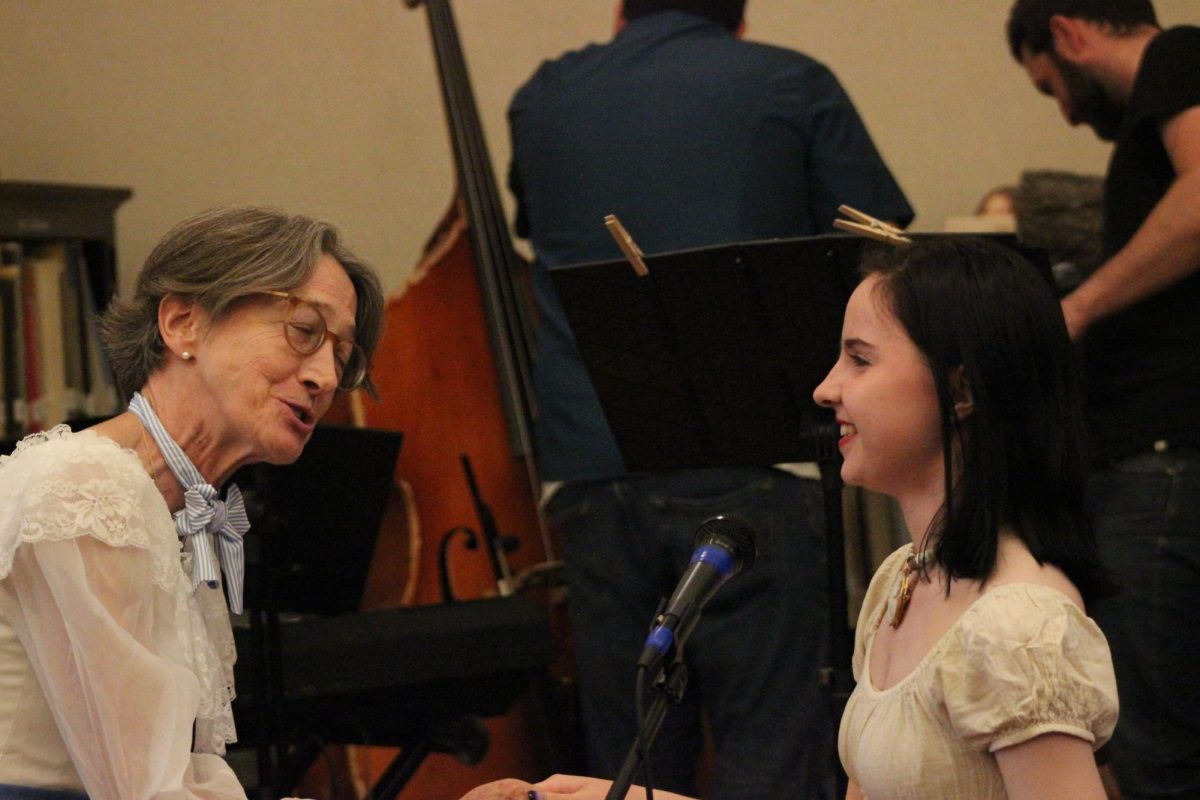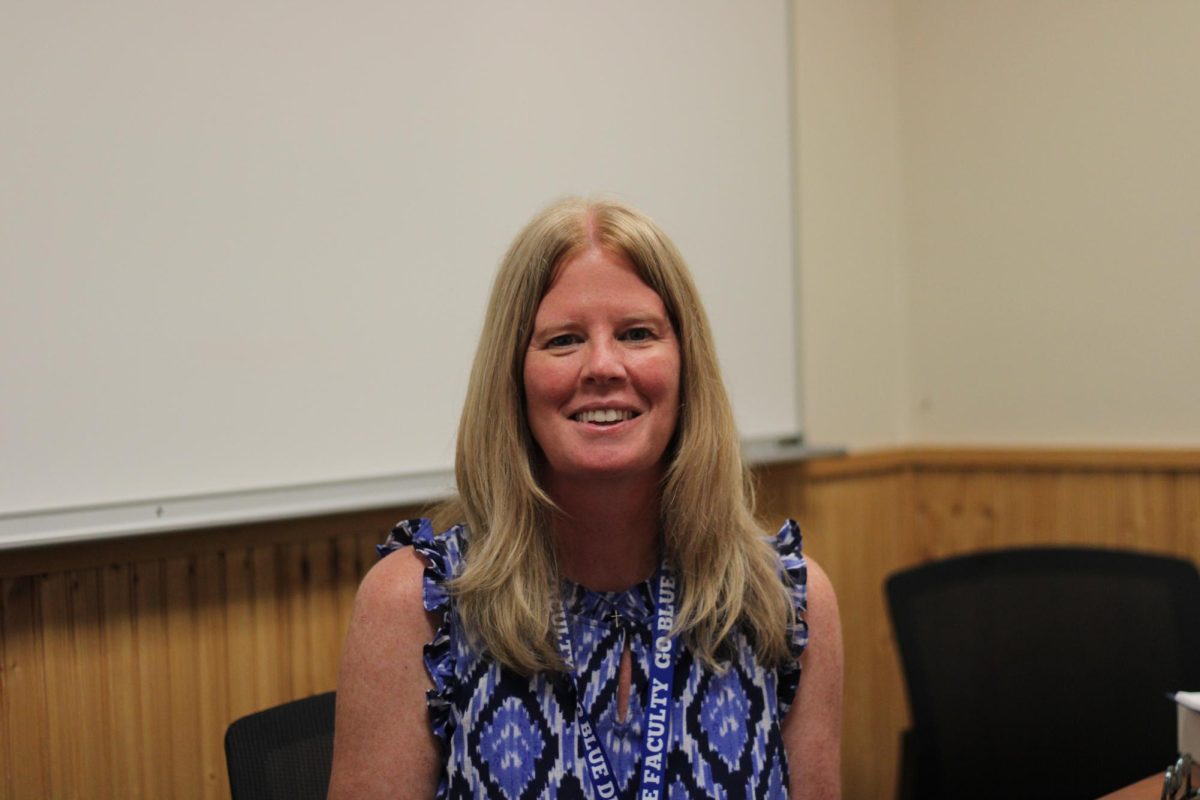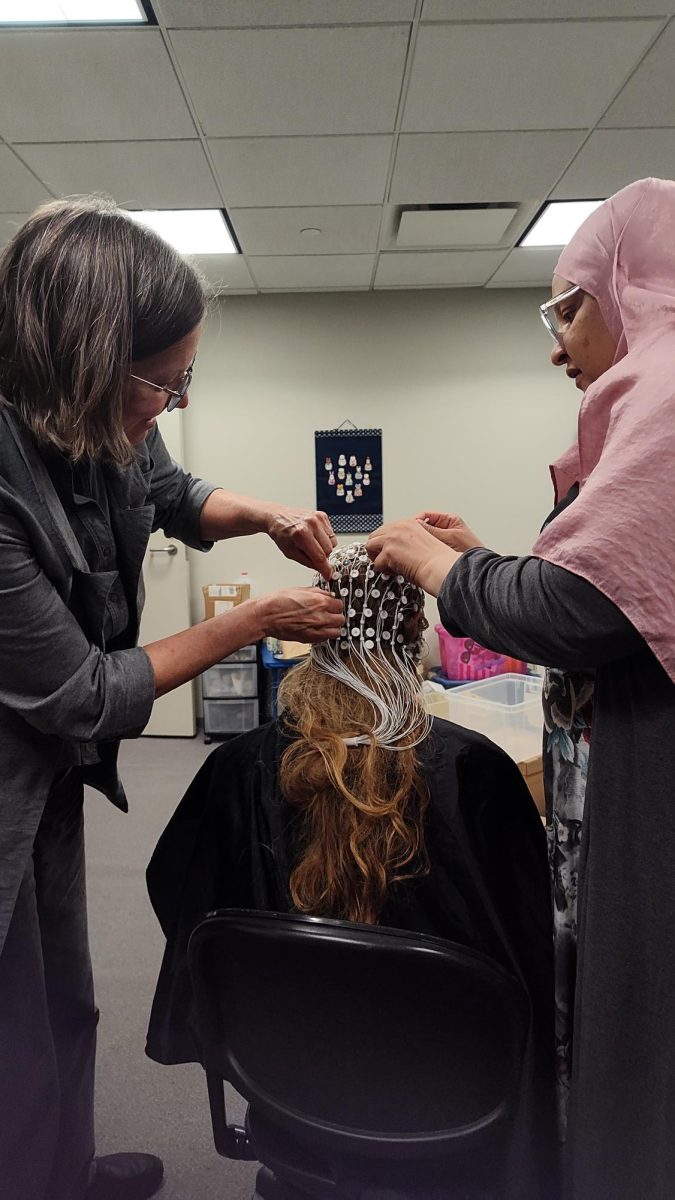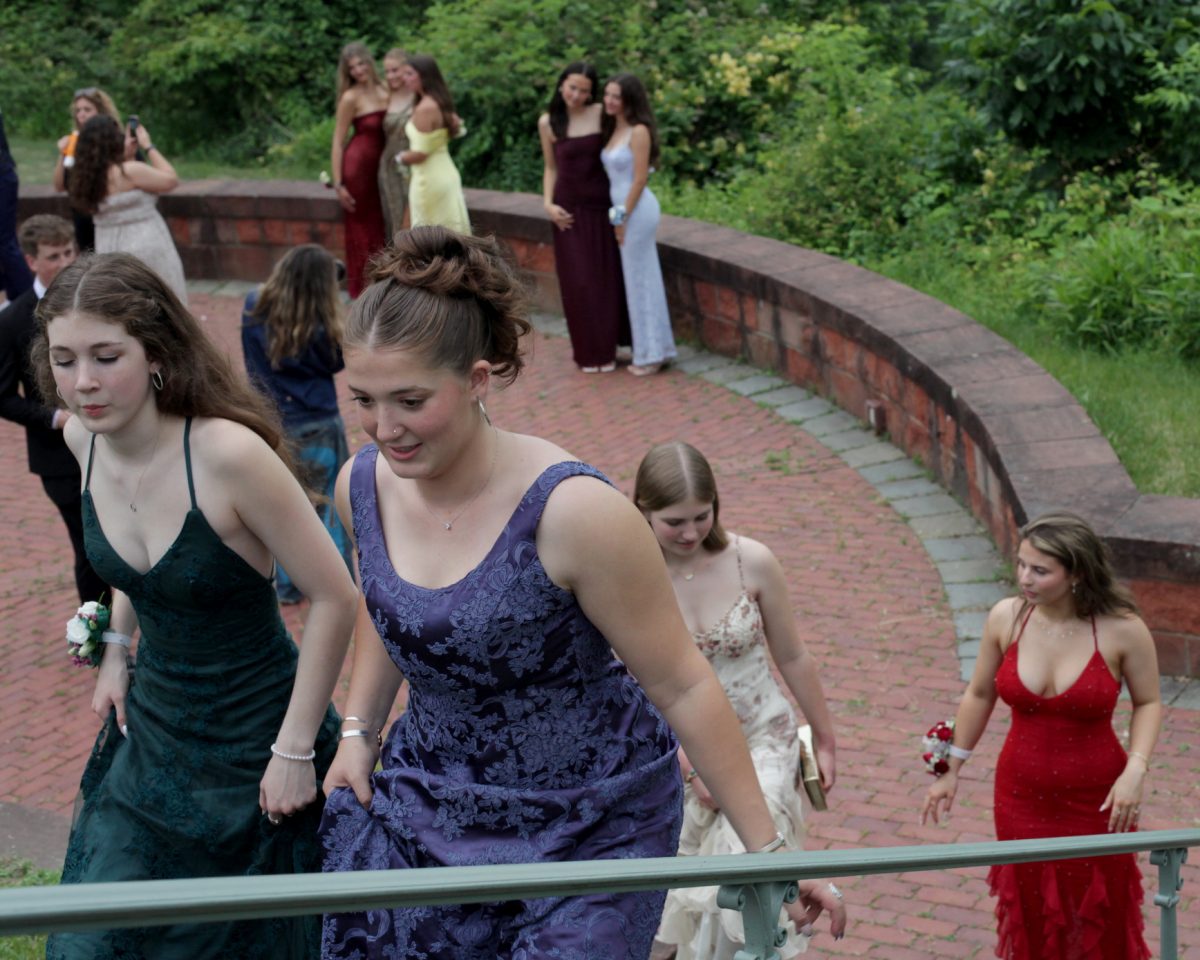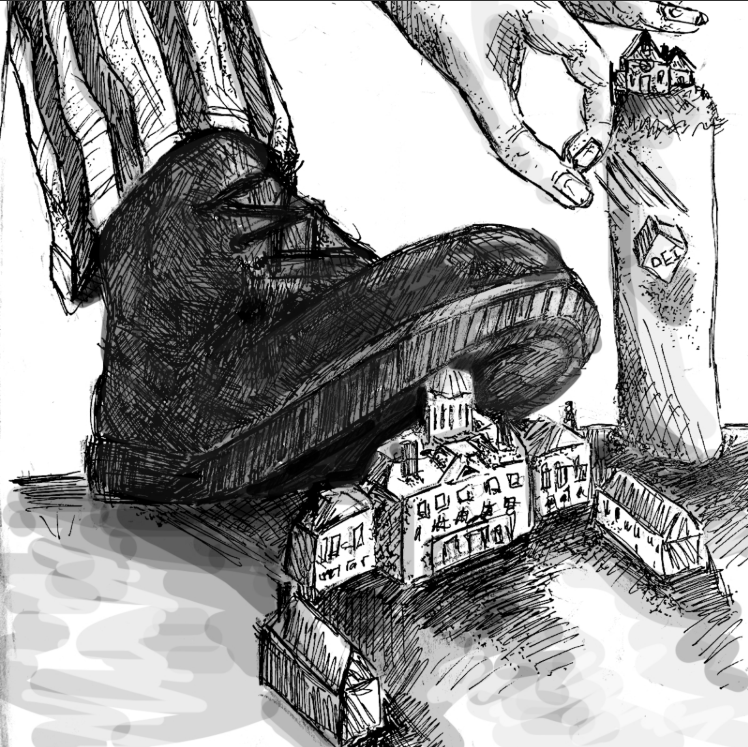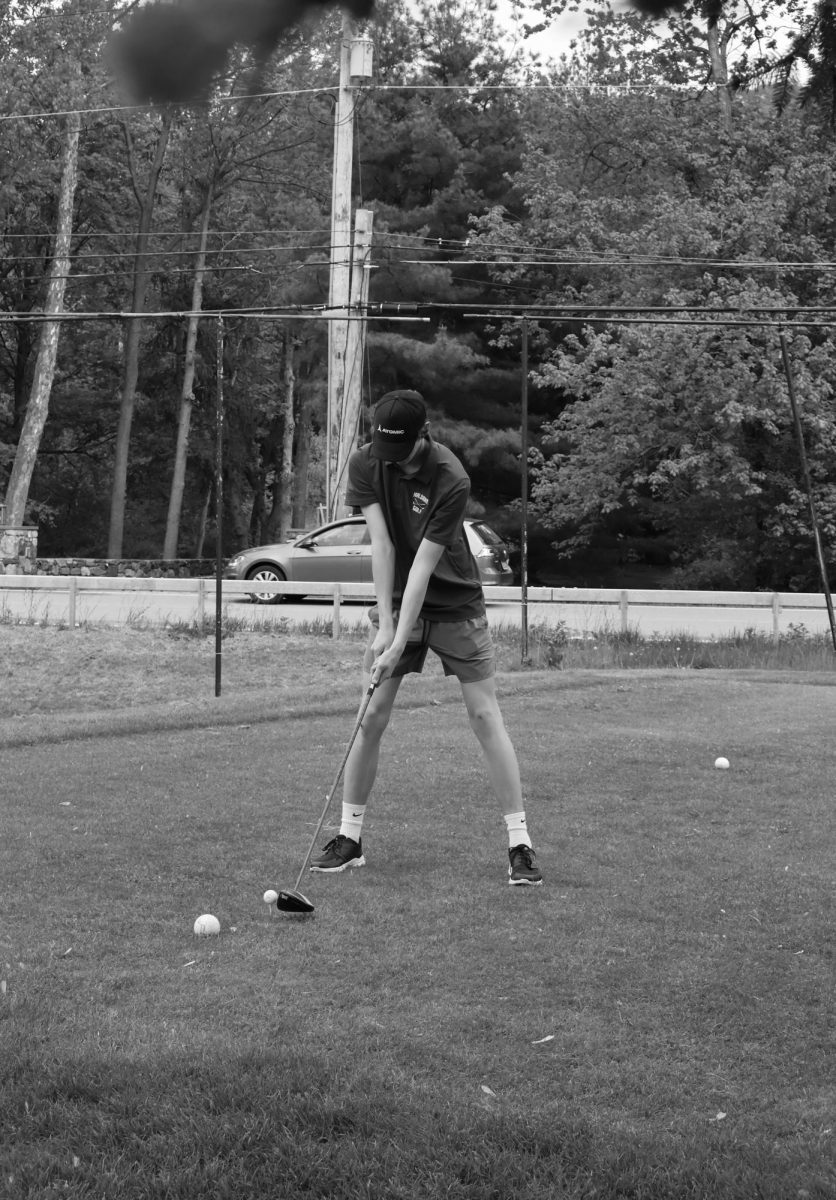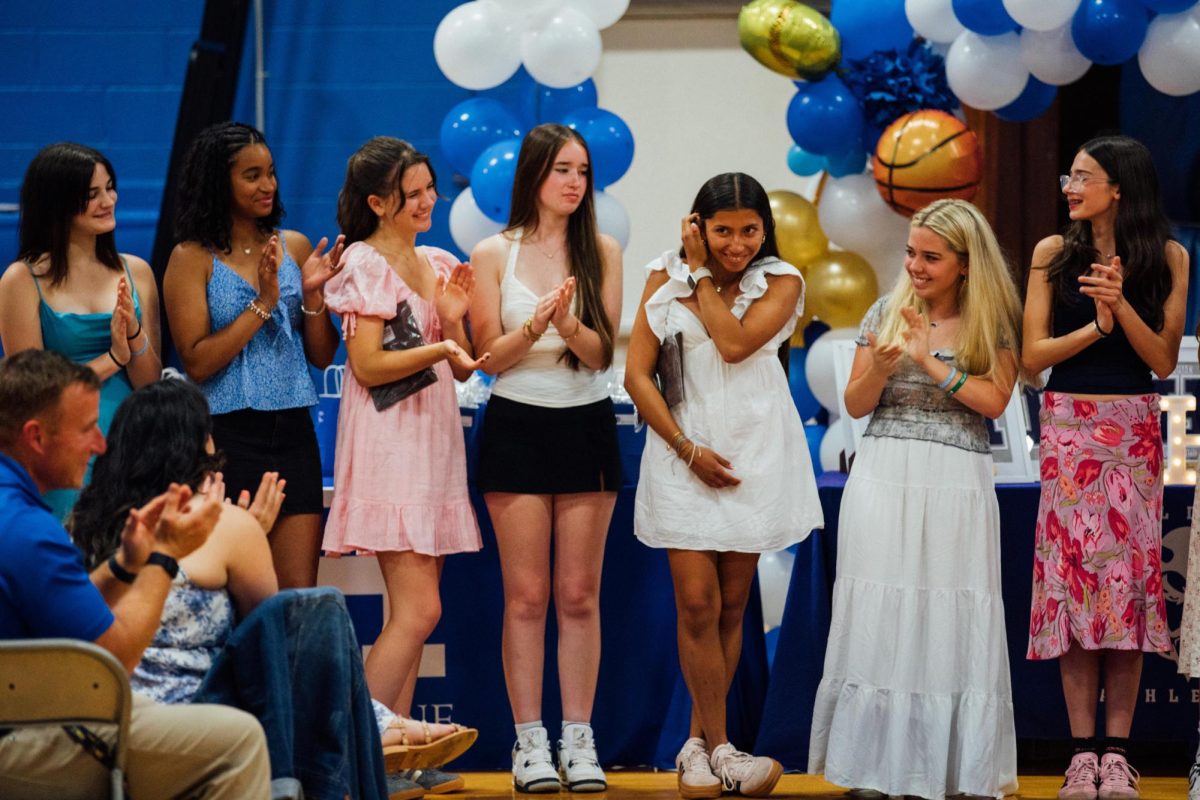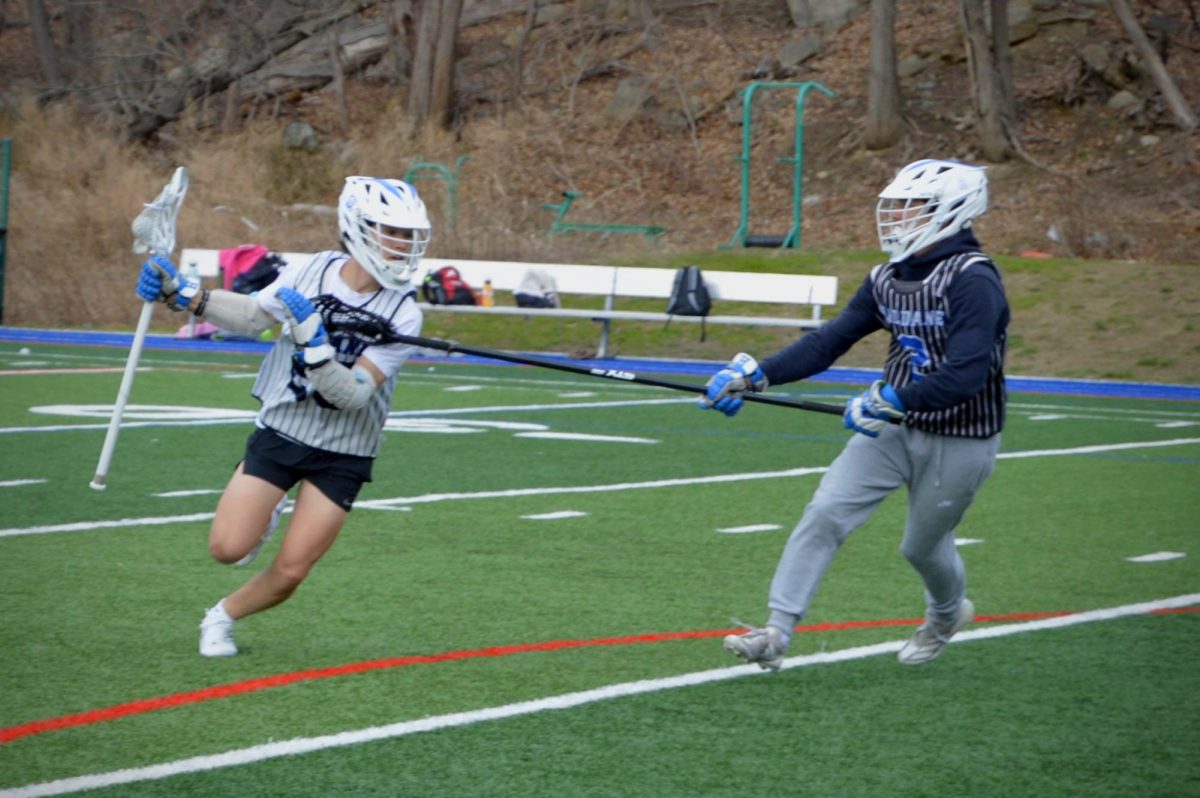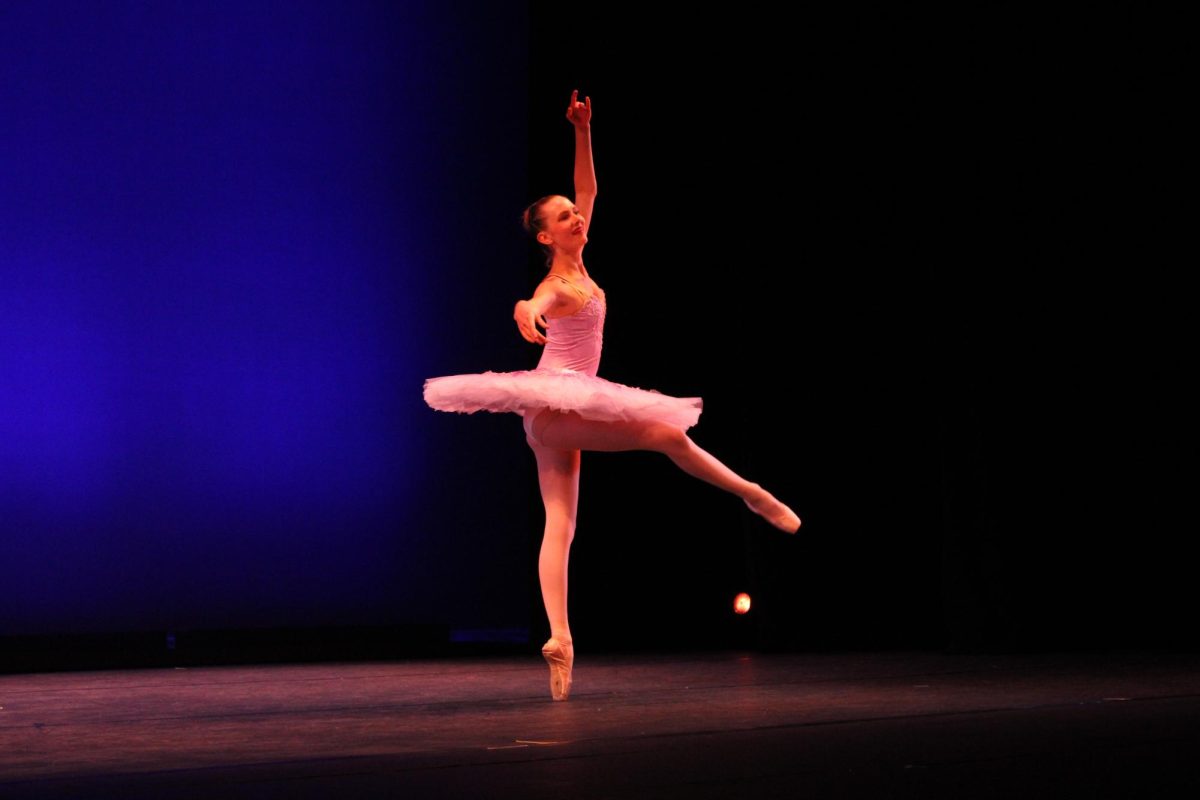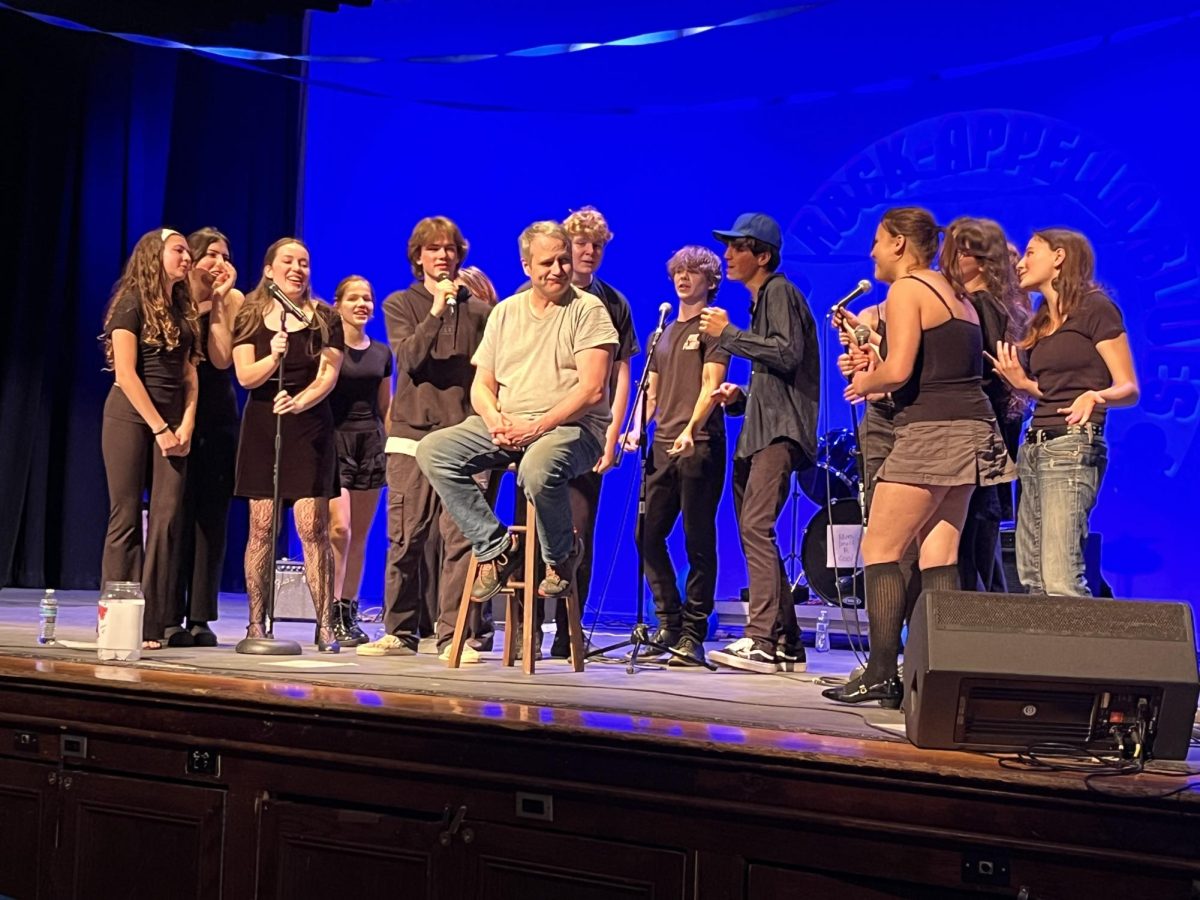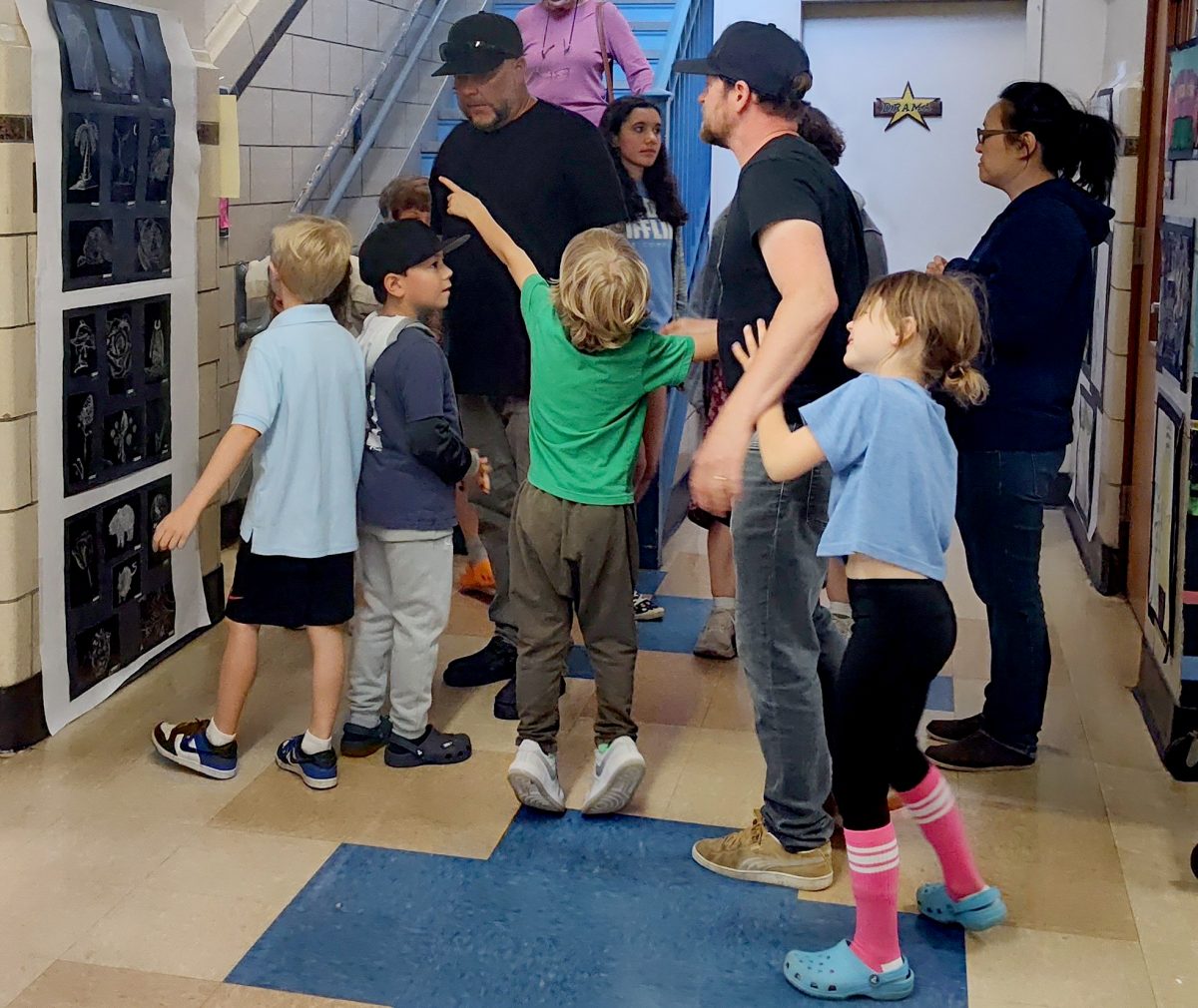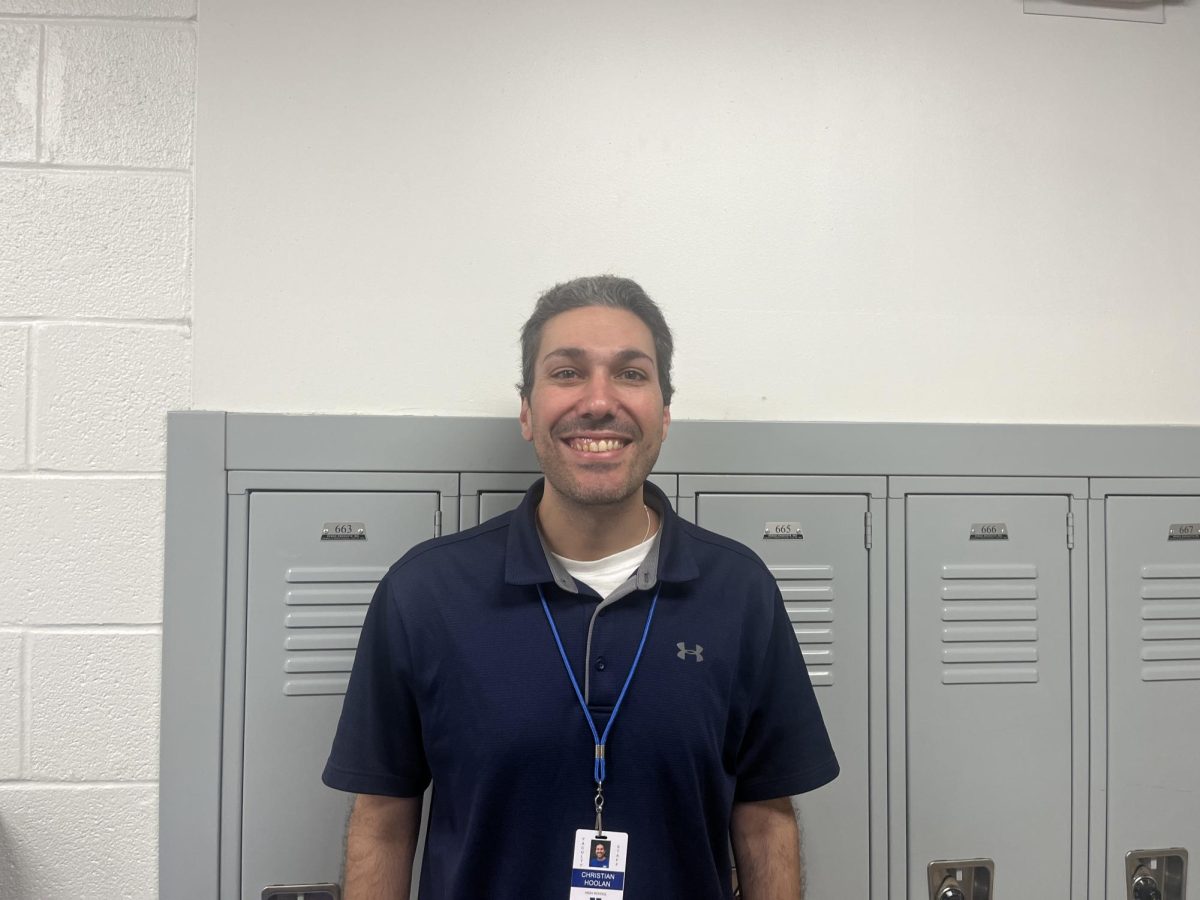This fall, the Blue Devil wasn’t the only thing with horns at Haldane. From arriving on campus in the crisp hours of the morning to being featured on nearly every bulletin board in the building, the Haldane Goats have truly brought a sense of surrealism and excitement to the school and surrounding community. But how exactly did one student club manage such a feat, and for what reason?
Sofia Kelly was a freshman when she founded the Habitat Revival Club, a student-lead organization dedicated to the conservation and protection of the local environment. This includes uprooting invasive species – species that are foreign to an area and do harm to the native plants and animals they were introduced to. Haldane’s campus is full of them, so Kelly and her club formulated a plan of attack to restore the natural spaces around our school. But there was one problem: the invasive plant they aimed to eliminate, mugwort, was a strong plant with thick, stubborn roots. Manual removal of it proved time consuming, machinery relied on fossil fuels, and pesticides would damage anything it was sprayed on, not just the targeted mugwort. That was when director of maintenance Adam McNeil approached Kelly with an idea: campus goats! Due to their strong teeth and stomaches, goats can chomp down on anything. Poison ivy, thorns, thick branches– you name it, the goats will eat it. The best part is, there’s less risk of the plants simply growing back once the goats are gone. “Their digestive system is uniquely evolved to prevent seeds from regerminating,” Kelly explained. “So they’ll eat all the stuff, they’ll poop it out, and that fertilizer will improve the quality of the soil, but the seeds won’t regerminate. Plus, the goats have become a wonderful source of positivity for students. For once in perhaps the entire history of the school, there is a steady flow of lunch time visitors to the clearing behind the building where the goats work. Visitors range from students carrying trays from the cafeteria to teachers standing by the fence, and even to guests from the elementary and middle schools coming all the way up the hill just to admire the goats.
Gaining school approval for the project wasn’t an easy task, though. In order to get permission to move forward, Kelly had to go through several levels of administration, teaching each about invasive species and the power of goats. “It was very intimidating, talking to the superintendent, talking to the board of education, all the different directors…” Kelly said. “Basically, communicating with all of these adults who were doubting in the project.” Kelly recalled the financial hoops she had to jump through as well, applying for grants to cover both the maintenance and liability costs of campus goats. The club spent $5,500 total on the project, a sum that included the goats themselves, transport of the goats, fencing, and fencing installment. Despite these challenges, Kelly advocated for her project. Her, and her band of environmental warriors that make up the Habitat Revival Club, were ultimately successful. Kelly extended gratitude towards principal Sniffen for having her back the whole way through; without her, Kelly said, the project would not have been possible. “I want to credit a lot of that [success] to Mrs. Sniffen,” Kelly said. “It really does help to have Mrs. Sniffen in your corner when you’re wanting to do anything.”
For students who are not as passionate as she is, Kelly is hopeful her club will inspire them to pay more attention to the environment. According to Kelly, humans tend to believe that they are separate from the natural world due to technological advancement. “I think we need to change this mindset and recognize that we are part of nature,” she stressed. As inhabitants of Earth, Kelly expressed the belief that we have a responsibility to take care of our planet. The Habitat Revival Club strives to empower students through learning about and caring for nature. Kelly explained that the first step towards solving the climate crisis is to start with heavy, local, grassroots work. This is encouraging for students who may feel helpless in the face of environmental injustice. “I think climate change, and a lot of these environmental issues, feel so impersonal, feel so grand,” Kelly explained.
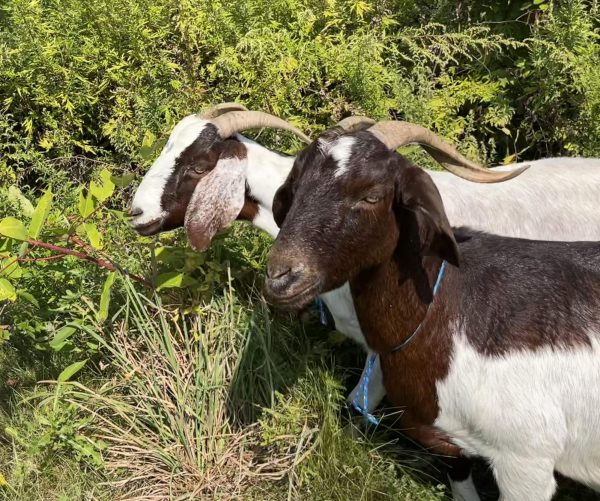
Starting local, Kelly said, produces “a very obvious, direct positive effect” that students can take heart in. Her beliefs are echoed by the World Economic Forum: “Most projects that achieve meaningful and long-lasting impact have a laser-sharp focus on a tangible outcome. This is easier to achieve with a locally-focused project.” Partnerships between locals who are familiar with the highly specific environmental problems they face within their communities, and larger organizations who can provide the support needed to tackle these problems, is crucial not only in terms of ecological preservation, but in all problems we as a species may encounter.
Kelly has plans to expand the pollinator garden once an area of invasive species is cleared, and hopes to build an outdoor classroom as well. Even without this outdoor classroom, though, many teachers are already using these goats as a teaching opportunity. Among them, Katie Moeller’s fourth grade class, led by Carolyn Llewellyn, who were enthusiastic about the new arrivals. The class would soon read a book all about the incredible nature of goats and were visiting the enclosure for preparation, though they seemed to already know a lot about invasive plants. Ms. Llewellyn expressed excitement at the progress made so far in removing the invasive species in the back of the school, saying “I can already see a difference, I mean even when I came here yesterday this much wasn’t gone.” Having spent many years on a farm herself, she was pleased with the ambition of the Habitat Revival Club being put to such a helpful use. “I think it’s incredible how you managed to get the grants and funds for all this” she remarked.
The goats will be taken away from their Cold Spring vacation in about two to three weeks, assuming it doesn’t take more time for them to finish clearing the mugwort. There are additional plans for the goats to return to the school some time in the spring; as long as there are invasive plants loitering the Haldane campus, the goats’ collaboration with the Habitat Revival Club is far from over.



